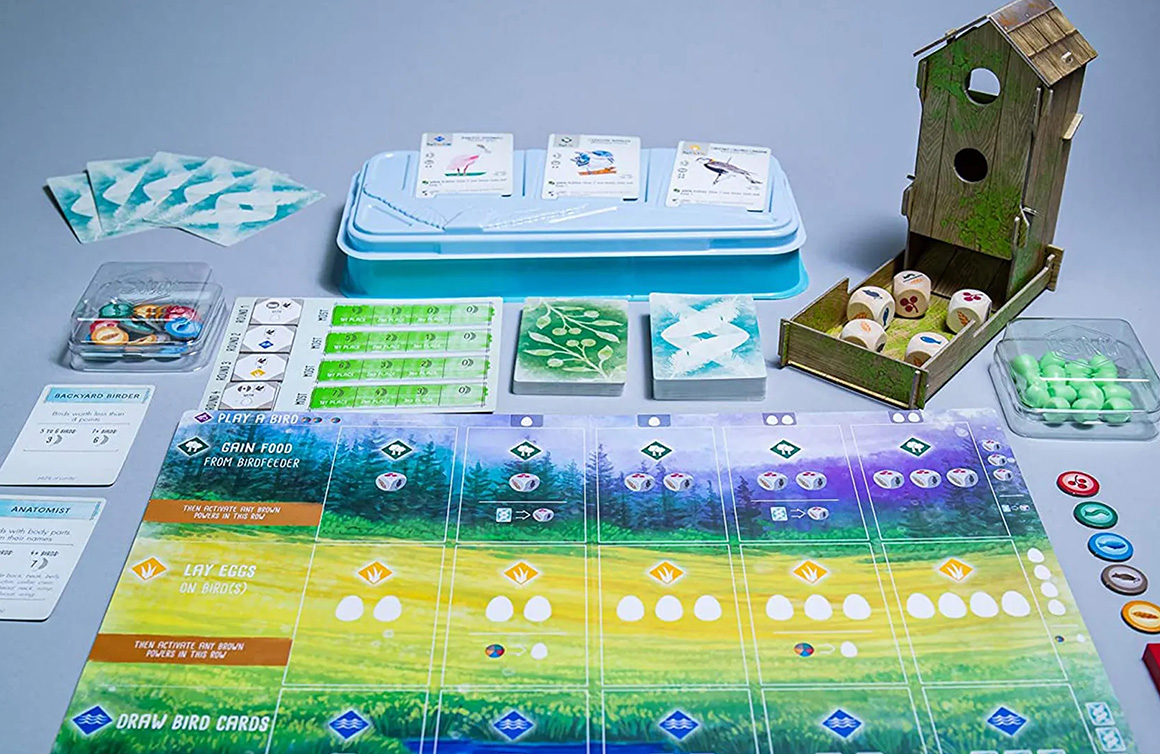There is little doubt that tabletop games — both board and card games — are enjoying a renaissance.
The increasing popularity of traditional analogue games began long before the COVID-19 pandemic fueled at-home activities. Now, thousands of new games hit the market each year, supported by crowdfunding efforts such as Kickstarter. Game designers can access such resources to demonstrate their games’ popularity through funders’ support. That can be a valuable boost to both themselves and to potential publishers.
The website Dicebreaker reports that tabletop games represent 50% of Kickstarter-funded games and that more than half of new games placed on the website reach their funding goals.
Richard Garfield
Mathematician Garfield is a game designer to watch — innovation seems to be his specialty.
Before crowdfunding, when the Internet itself was in its infancy, Garfield brought a board game to publishers Wizards of the Coast, which rejected it. But Peter Adkinson at Wizards asked Garfield for a shorter, portable game that would entertain players between sessions at gaming conferences. Building on card game variants he had worked on before, Garfield came up with Magic: The Gathering (MTG), the first collectible card game (CCG) — and a total success for Garfield and his publisher.
Garfield has since published one or more games nearly every year and also sometimes contributes to new MTG releases at Wizards of the Coast. Most recently, he experimented with a “blockchain” game that can be traded for cryptocurrency or traded with other gamers, with a small fee paid to the designer/publisher. But Garfield’s game can also be played with a standard deck. It’s a near opposite of his MTG game. The website Techcrunch reports that Garfield said Magic got “poisonous for the gameplay to have people basically buying just to see their money go up. Because it got in the way of the game as a game”.
Elisabeth Hargrave
In her own words, Elisabeth Hargrave is “a board game designer inspired by a love of nature and a desire to play games that break away from tried-and-true themes.” An avid birder, she utilized online data from the Cornell Lab of Ornithology and the Audubon Society to design the game Wingspan, which she describes as “a card-based engine-building game about bringing birds into a nature preserve.”
She brought the game (then named Bring in the Birds) to the GenCon game conference in 2016 and showed it to three publishers. Stonemaier Games agreed to publish it, and the first three runs in 2019 — equaling 44,000 games — sold out in two months. The game won multiple awards, including the prestigious German Spiel des Jahres.
In the meantime, Hargrave successfully crowdfunded a second game, Tussie Mussie, a card game about the Victorian language of flowers. Meeting its initial goal of $1,000, the game raised $80,000 and Button Shy Games published it in 2019. Hargrave may be something of a creative maverick, but she knows what kind of games she would like to play, and she confidently designs them.
Reiner Knizia
Born in Germany and now living in England, — and with over 700 published games of his design — Reiner Knizia designed his first game at the age of eight. Knizia has helped bring German-style games, or what we know as Euro games, to a global audience.
Knizia started developing games for his play-by-mail zine Postspillion, founded in 1985. The zine is still being published. His games are often listed on top-100 games lists and they have won multiple awards, including a Spiel des Jahres. Among many popular designs, his 2000 Lord of the Rings game is published in 17 languages and has sold over one-million copies. In 2015, Ravensburger released Knizia’s Star Wars VII – Galaxy Rebellion based on the popular movie franchise.
Several of his popular designs have been redeveloped for the electronic gaming and console markets, and Knizia himself has designed hybrid games with electronic components. Although his games vary from children’s games to card games to role-playing, he is perhaps best known for pioneering the abstract theme game concept.
Unlike a game like Monopoly, in which players imagine they are real estate investors hoping for a monopoly, Knizia’s games do not directly relate to their specific themes. Rather, players’ choices and actions suggest the conditions the title theme implies. His game Medici utilizes an abstract system of drawing and buying cards that does not model the Italian pre-Renaissance, but in the game’s world, players attempt to value risk, a success factor for the investment banking business which made the Medici wealthy. Knizia’s most successful games utilize an auction feature to monetize risk within the game.
Innovators in Game Design
These are examples of three game designers who approach their work in diverse ways and who have each achieved success. The world of tabletop games is in a period of great expansion, thanks in part to crowdfunding, the recent global pandemic, and, we might assume, a heightened quality in game design and play value. It is likely this trend will continue.
Note: If you buy something using the eBay link in this story, we may earn a small commission. Thank you for supporting independent toy journalism!




